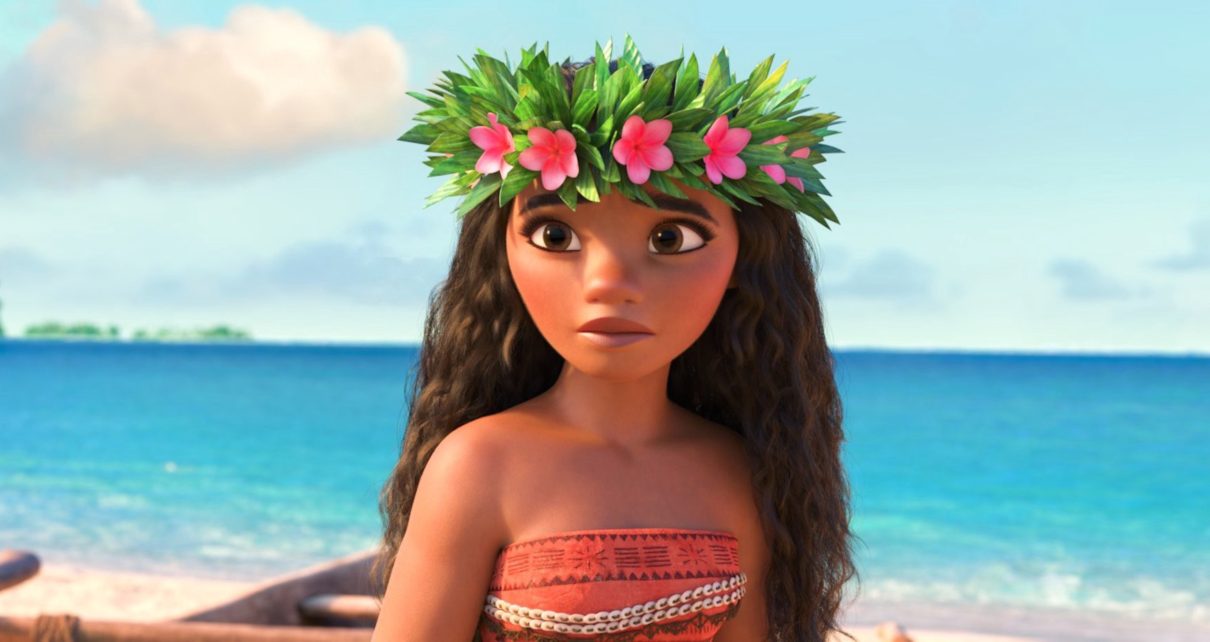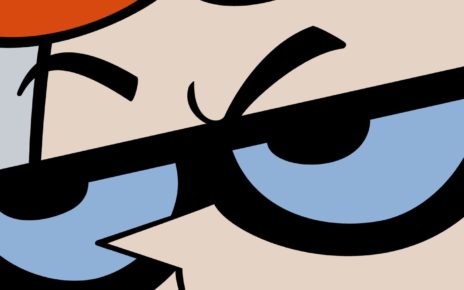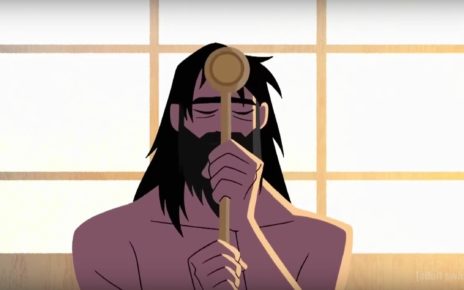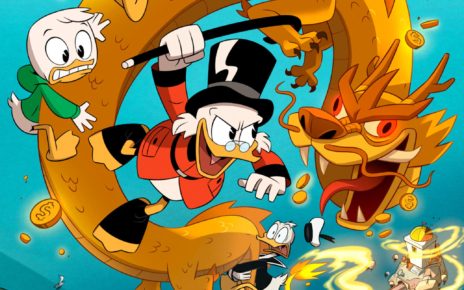When I saw Disney’s Moana in theaters, I will admit, I didn’t come to it with a completely unbiased stance. I had seen the criticism online, most of it leveled at the film’s deuteragonist, Maui. The critiques ranged from Tumblr blogs to full-blown articles by Polynesian activists and scholars. Some took issue with Maui’s body type while others focused on the fact that seeing their cultural hero as a self-serving narcissist directly contradicted the Maui they grew up hearing about from their elders.
Going into the film as an American mainland person without any Polynesian ancestry, I saw these critical lenses as crucial to my understanding of the film’s portrayal of Polynesian folklore and culture. I saw it less as a study of anything really accurate and more of a peering into another kind of world that Disney has never tackled before, something that should be taken with a big grain of salt.
Unsure of the accuracy of the film as it pertains to indigenous issues and culture, I decided to interview someone who was part of the original test audience of Moana and get their perspective on the issue of Polynesian culture being explored in a Disney film.
Minnie Degawan is an indigenous rights activist and environmentalist who was invited to a test screening of the original cut of Moana, with a handful of other activists. She has worked with Social Safeguards under the World Wildlife Fund’s international Forest and Climate Initiative (FCI). Degawan’s approach to activism also stresses the importance of the growing threat of climate change and how it affects Pacific Island culture. She agreed to a short phone interview for the purpose of weighing on the cultural weight of the film and addressing many of its criticisms.
Let’s talk about your role for Moana as a “cultural appropriation advisor.”
Right! Well, that sounds so formal. We actually just reached out for us to make a quick sort of review just to make sure that they haven’t violated any cultural norms, and I believe before they even started the film, they did do a lot of consultations. It was really just a quick check.
[‘Moana’] has a lot of shortcomings, I would say. But I guess it also has to strike a balance.
So you were there for advance screenings of the film, and you managed to watch it as a test audience?
Yeah! There was only five of us I think, yeah. It wasn’t really very well polished. It was really just a sneak preview just to make sure that everything is in keeping with the cultural norms of the communities and so that they do not also overstep their boundaries with other communities.
I have actually been doing lots of research as to criticism of Maui as a character particularly in Polynesian scholarly circles. A lot of people have had issues with him as a character in the film.
[Laughs.] I can imagine, because after that I was in Samoa, and I was talking with the people there. Understandably so, and that’s what I also told Disney, that you know, it’s always a fine balance because of course Disney doesn’t always make these films out of the goodness of their hearts, but it’s more to make money, so they have to reach out to audiences and make it popular. So it’s always a fine balance of trying to toe the line and at the same time, take into [account] the commercial needs. And as always you can’t please everybody. I’ve talked to cultural activists from Hawaii who are quite happy with the way that… [laughs] well, actually they have a few issues, the main issue I think being [Maui’s] dancing towards the end of the film. It is a bit offensive — it is offensive to many to the communities. But they are pleased that their hero is up there and people are talking about him.
I guess there is always something that gets lost in the translation, so I think if you are looking at it from a scholarly point of view then of course, then it doesn’t make the cut, but if you are looking at it basically to educate, to spark the discussion, then I think it starts to have that effect. To spark discussions on “What is Polynesian culture?” and “What is the impact of climate change on these cultures?”
If we look deeper into our roots, we are all one.
I didn’t even think of climate change as being an initial theme of the film, but looking back at the film itself, especially when they were healing an island toward the end of the film. Now it really makes more sense to me. There is also an environmentalist message — that we have to take care of the earth: the ocean and our planet.
Oh! [Laughs.] But I guess that is the main message all along. Climate change is happening, and to respond to climate change, we have to go back to our roots, go back to our cultures, because the biggest solutions to climate change lies in our roots. And I think this resonated very well not just in the Pacific islands but to other communities, like the Philippines. I was talking to them and they said, “Yes, of course, this actually stresses the need for us to reach out and not just look at it from our small communities and reach out to other communities.” Because if we look deeper into our roots, we are all one, and I think that is what is nice about it. It wasn’t highlighted on climate change and solutions, but it was presented in a way that would resonate with not just climate change activists and cultural activists but also to younger people. So, yeah. It has a lot of shortcomings, I would say. But I guess it also has to strike a balance.
There was just so much stereotyping of the hula dancers. The shots from behind! They decided to cut some of those.
Was there anything in the test screening that was initially something that had to be absolutely cut out of the film? Did you actually see the final version of the film?
I did, yes. Yes, there was one. It was unfortunate that they didn’t include it, because we were saying that it would be very powerful. Because they have actually a short film of the filming, like, behind the scenes, where they showed the elders of different Pacific communities, where they are actually participating in a discussion about it. We had told them, “It would be very helpful if you would wrap there, because then people would realize, yes, this is an animated film, but behind it all are real people facing real problems.”
It was unfortunate that they didn’t put it because it was very short. I think it was just three minutes. But it did show the communities. The other thing that we raised was that there was just so much stereotyping of the hula dancers. The shots from behind! [Laughs.] This is, again, reinforcing stereotypes of Pacific Islanders; always with the dancing of the hula and the shots from behind, therefore, you are stressing the hips and so on. We actually told them, “There is a lack of handsome Pacific Islander men. Why is it always the women that have to be objectified?” And so they decided to cut some of those.
So there wasn’t much of a dramatic difference between the test screening and the final cuts from the film, aside from the hula dancing?
I don’t remember much, but yes, it’s not so much different from the rough cut of the final one. They did cut some of the dancing.
I really appreciate your time today. Was there anything specific you wanted to mention in regards to the film or Pacific Island culture?
It would be nice to stress the point that we have a lot of people who look of the ocean as something that divides us. Like, “Oh, they’re Pacific Islanders.” I hope after watching the film, they see the ocean as a uniting factor rather than a dividing one.
Disney’s Moana was recently released on iTunes and Amazon Video in HD on February 21, 2017, and was released on Blu Ray on March 7.
This interview has been edited and condensed for publication.
Thanks for reading The Dot and Line, where we talk about animation of all kinds. Don’t forget to ❤ this article and follow us on Twitter and Facebook.





